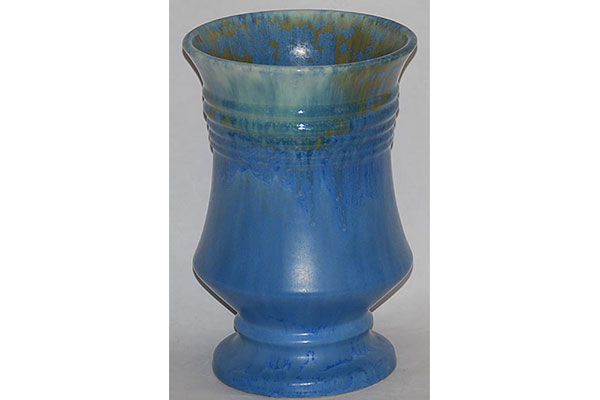
Roseville Tourmaline
Anyone who’s a fan of Roseville Pottery likely has heard of the “glaze before shape” rule. For those who have only recently discovered the beauty of this line of American art pottery may be a bit confused. Basically, because some shapes transcend the various Roseville Pottery lines, it makes for an easier and more accurate identification if one considers the glaze when trying to identify a piece instead of the shape. As Mark Bassett points out in Introducing Roseville Pottery:
(If you discover) a Roseville Futura shape that is white all over and has die-impressed marks, then your piece is from the Ivory line – even if the shape number is not listed under Ivory in the Roseville books.
Not only that, but this rule is applicable despite the die impressions that indicate a different line. There is a particular Rozane Royal ewer that is incorrectly marked as an Azurean piece. As with all rules, however, there is an exception. The Trial Glaze pieces switch the rule and make the shape the accurate identification method. Because these experimentals seem to be only a habit of Roseville potters, they are more valuable than other Roseville pottery.
Especially prior to 1910, the Roseville shapes that gained popularity with consumers often were the deciding factor when developing a new line. There was one line, the Roseville Tourmaline, that both introduced new shapes while also bringing several older shapes, courtesy of the Roseville Futura, Roseville Earlam and Roseville Imperial into the mix; further reiterating the importance of distinguishing one from the other.
Clearly, it’s easy to understand how confusing it can become when it comes to identifying Roseville lines. Once a

Roseville Artwood
collector can grasp the glaze before shape mindset, it usually becomes much smoother sailing. There’s one more reason to understanding the identification process: some lines are more valuable than others. You might think you’ve identified a Roseville Futura piece and bought it only to discover it’s actually a Roseville Artwood piece, which is not as valuable.


